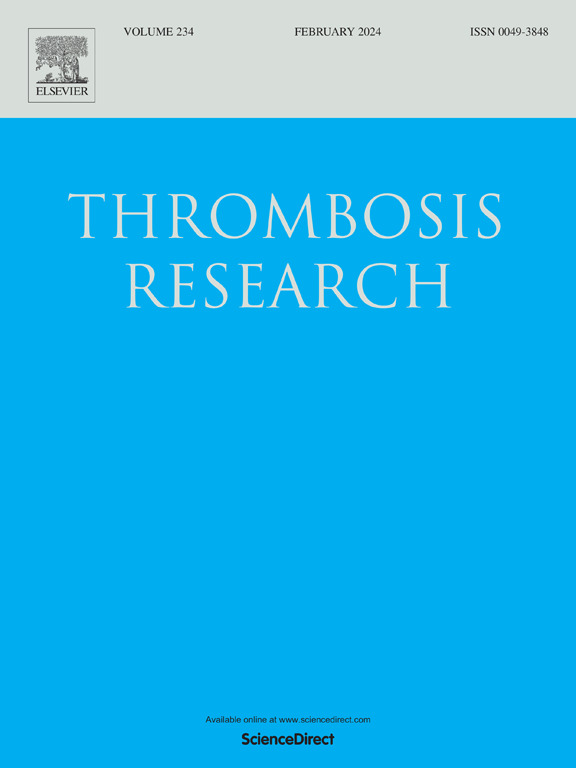Disseminated Intravascular Coagulopathy and Persistent Inflammation, Immunosuppression, and Catabolism Syndrome: Pathophysiology, shared pathways, and clinical implications
IF 3.7
3区 医学
Q1 HEMATOLOGY
引用次数: 0
Abstract
Background
Disseminated Intravascular Coagulopathy (DIC) and Persistent Inflammation, Immunosuppression, and Catabolism Syndrome (PICS) are critical care syndromes that frequently coexist in critically ill patients, but mechanisms underlying their shared pathways are not well understood.
Objective
This review discusses the pathophysiology of DIC and PICS and explores the shared mechanisms behind DIC and PICS and their implications for clinical management.
Findings
DIC and PICS share a common pathophysiological foundation of endothelial dysfunction, coagulation dysregulation, and inflammation, leading to a vicious cycle of microvascular injury and systemic inflammation, culminating in organ dysfunction. DIC has also been identified as an independent risk factor for PICS. Anticoagulation therapies such as antithrombin, recombinant human soluble thrombomodulin (rhTM), and heparin attenuates inflammation, a mechanism underlying both syndromes, thereby improving outcomes in PICS.
Conclusion
DIC and PICS share critical pathophysiological pathways that exacerbate outcomes in critically ill patients. Recognizing these interconnections is essential for developing targeted therapies. Standardizing PICS definitions and advancing research to clarify mechanisms, interplay, and causality between DIC and PICS are crucial next steps.
弥散性血管内凝血病和持续性炎症、免疫抑制和分解代谢综合征:病理生理学、共享通路和临床意义
弥散性血管内凝血病(DIC)和持续性炎症、免疫抑制和分解代谢综合征(PICS)是危重患者经常共存的危重综合征,但其共同途径的机制尚不清楚。目的综述DIC和PICS的病理生理学,探讨DIC和PICS的共同机制及其对临床治疗的意义。发现dic和PICS具有内皮功能障碍、凝血功能失调和炎症的共同病理生理基础,导致微血管损伤和全身炎症的恶性循环,最终导致器官功能障碍。DIC也被认为是PICS的一个独立风险因素。抗凝治疗如抗凝血酶、重组人可溶性凝血调节素(rhTM)和肝素可减轻炎症,这是两种综合征的潜在机制,从而改善PICS的预后。结论dic与PICS共享加重危重患者预后的关键病理生理通路。认识到这些相互联系对于开发靶向治疗至关重要。标准化PICS定义和推进研究以阐明DIC和PICS之间的机制、相互作用和因果关系是接下来的关键步骤。
本文章由计算机程序翻译,如有差异,请以英文原文为准。
求助全文
约1分钟内获得全文
求助全文
来源期刊

Thrombosis research
医学-外周血管病
CiteScore
14.60
自引率
4.00%
发文量
364
审稿时长
31 days
期刊介绍:
Thrombosis Research is an international journal dedicated to the swift dissemination of new information on thrombosis, hemostasis, and vascular biology, aimed at advancing both science and clinical care. The journal publishes peer-reviewed original research, reviews, editorials, opinions, and critiques, covering both basic and clinical studies. Priority is given to research that promises novel approaches in the diagnosis, therapy, prognosis, and prevention of thrombotic and hemorrhagic diseases.
 求助内容:
求助内容: 应助结果提醒方式:
应助结果提醒方式:


